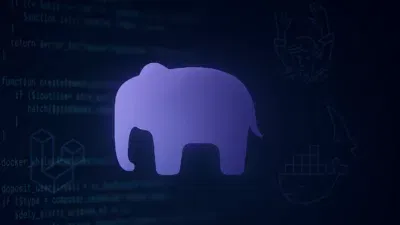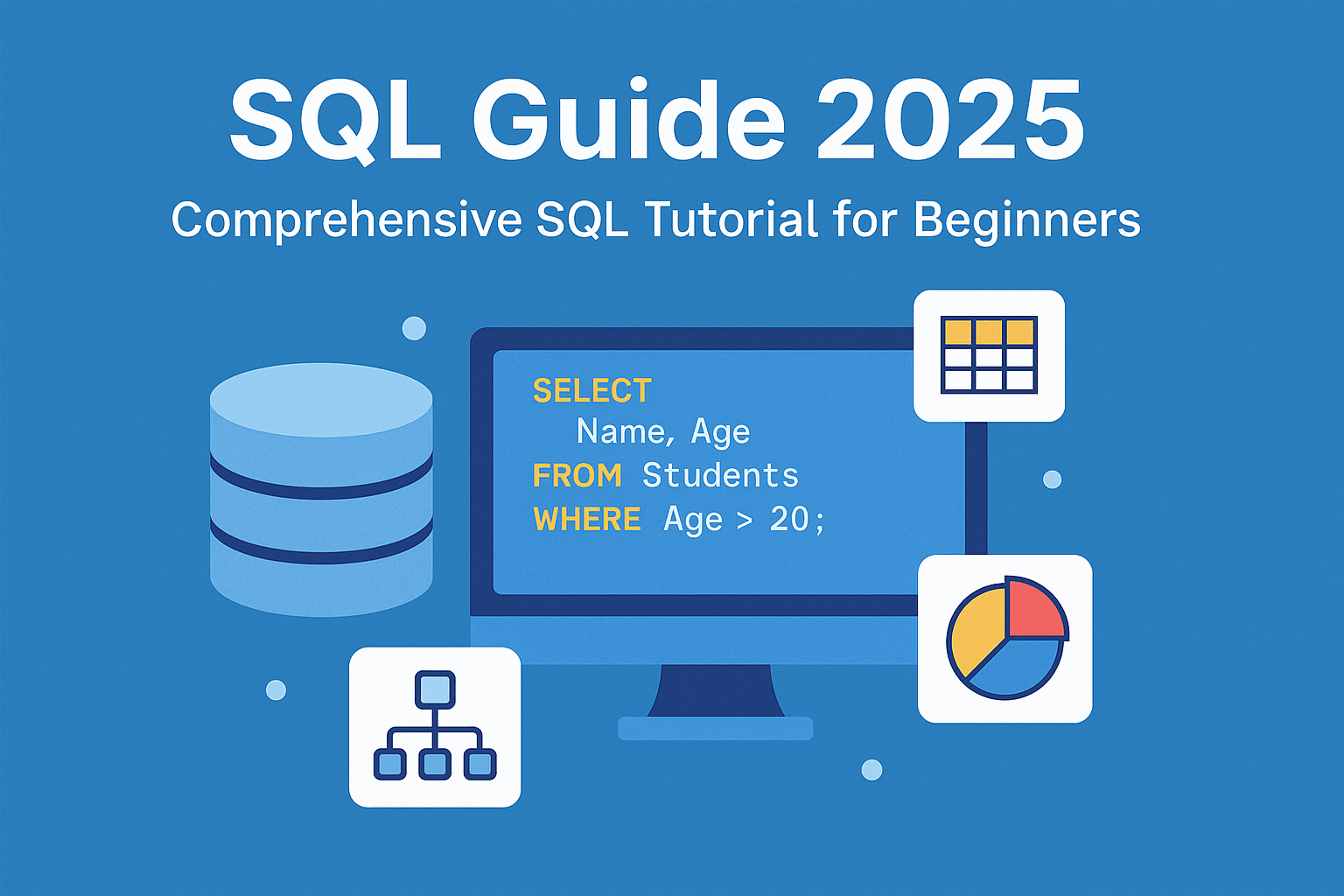Go (or Golang) has matured into a fast, safe and portable systems‑language that now powers containers, cloud services, data‑engineering pipelines and AI back‑ends. The 2024–25 release cycle (Go 1.22 and Go 1.23) refines the language with iterator functions, safer for‑loop variables, preview generic type aliases, profile‑guided optimisation (PGO) and opt‑in telemetry – all while preserving the famous “Go 1 compatibility promise” (Go Team 2024; Go Team 2025). The guide below gives a structured, practice‑oriented path for new learners in 2025: installing the tool‑chain, understanding syntax and generics, mastering concurrency patterns, writing tests and benchmarks, building for WebAssembly and containers, and adopting community frameworks such as Gin. Each section ends with practical tips and common pitfalls drawn from survey data, production post‑mortems and Sri Lankan classroom experience.
Table of contents
- 1 Why learn Go in 2025?
- 2 Setting up the environment
- 3 Language fundamentals
- 4 Concurrency without tears
- 5 Testing, fuzzing and benchmarking
- 6 Tool‑chain power features
- 7 Building, deployment and cross‑compilation
- 8 Ecosystem and frameworks
- 9 Best practices for idiomatic Go
- 10 Suggested learning path (12 weeks)
- 11 Recap
- References
1 Why learn Go in 2025?
Go continues to rank among the top twelve languages on RedMonk’s industry index and remains one of the best‑paid skills in JetBrains’ 2024 Developer Ecosystem survey (RedMonk 2024; JetBrains 2025). Stack Overflow’s 2024 survey found Go developers earn a median salary of USD 76 k and report high job satisfaction (Stack Overflow 2025). Companies such as Uber migrated latency‑sensitive microservices to Go and reported 100× speed‑ups (Uber Engineering 2024) while cloud providers integrate Go WebAssembly runtimes for edge computing (Go Team 2025). The trifecta of simple syntax + built‑in concurrency + single‑binary deployment makes Go attractive for:
- Cloud‑native microservices and APIs
- Distributed data processing (e.g., InfluxDB, CockroachDB)
- DevOps tooling (Docker, Terraform, Kubernetes)
- Low‑latency ML serving and real‑time analytics (Uber Engineering 2025) (uber.com)
2 Setting up the environment
- Download the official binaries (Linux, macOS, Windows or ARM) from
go.dev/dl(Go Team 2025) (tip.golang.org). - Verify installation with
go version; you should seego1.23or higher. - Workspace layout – since Go 1.22 you should default to modules first; do not rely on old
$GOPATHworkflows.go env -w GO111MODULE=onif you still inherit legacy scripts (Go Team 2024). - Editor support: VSCode (with
gopls) or JetBrains GoLand provide on‑save formatting, static analysis and live tests.
Tip: Use
go workto unite several related modules during a big assignment; Go 1.22 now supports ago work vendordirectory when you must freeze dependencies for an air‑gapped build (Go Team 2024) (tip.golang.org).
3 Language fundamentals
3.1 Basic syntax and data types
Go keeps a small keyword set; programs are easier for non‑English speakers to read. Key points:
- Packages – every file starts with
package. - Imports – logical grouping with a blank line between standard and third‑party libraries.
- Variables –
var,:=short declaration, constants withconst. - Control flow – single
for,if,switch,select.
Go 1.22 changed loop variable semantics: each for i := range slice iteration now gets a fresh copy, shutting the door on accidental closures (Go Team 2024) (tip.golang.org).
3.2 Functions, methods and interfaces
Functions are first‑class. Interfaces are implicit – any type that implements the method set satisfies the interface, promoting composition over inheritance.
3.3 Generics (type parameters)
Since Go 1.18, you can write func Map[T any](in []T, f func(T)T) []T. Go 1.23 optionally unlocks generic type aliases (GOEXPERIMENT=aliastypeparams) allowing ergonomic wrappers around generic libraries (Go Team 2025) (tip.golang.org). Early feedback suggests alias parameters make domain models clearer without sacrificing performance (Donovan 2021).
4 Concurrency without tears
Go’s goroutine + channel model embodies C.A.R. Hoare’s CSP in an approachable syntax. Key concurrency patterns every beginner must practise:
| Pattern | Code sketch | Use‑case |
|---|---|---|
| Fan‑out/fan‑in | start n goroutines on jobs channel; aggregate on waitgroup | CPU‑bound batch tasks |
| Worker pool | fixed goroutine pool, buffered task queue | rate‑limiting external APIs |
| Pipeline | chain of channels with domain‑transforms | streaming ETL / log processing |
| Context cancellation | ctx, cancel := context.WithTimeout | prevent goroutine leaks |
Advanced pattern talks (Ajmani 2013) remain relevant, and new range‑over‑function iterators in Go 1.23 simplify producer–consumer pipelines (Go Team 2025) (tip.golang.org).
Sri Lankan classroom note:When students first use channels, they forget to close them. Always
defer close(ch)in the sending goroutine to avoid dead‑locks.
5 Testing, fuzzing and benchmarking
- Unit testing –
go testdiscovers*_test.goautomatically. Table‑driven style keeps fixtures concise. - Benchmarks – functions beginning with
Benchmarkrun withgo test -bench=. -run=^$. Always reset timers after set‑up. - Fuzzing – native support landed in Go 1.18; by 1.22 the engine is stable and OSS‑Fuzz compatible (Go Team Fuzzing Docs) (go.dev). Use fuzzing for parsers and protocol handlers.
- Coverage – Go 1.22 finally reports coverage for packages without test files, preventing silent zero‑percent traps (Go Team 2024) (tip.golang.org).
6 Tool‑chain power features
6.1 Modules & versioning
Modules removed the GOPATH headaches. Remember:
- Semantic version tags (
vMAJOR.MINOR.PATCH). - If you publish
v2+, change the module path:module example.com/mylib/v2(Mehul 2025) (medium.com). go mod tidy -diff(1.23) shows a patch instead of editing files – helpful in code‑review pipelines (Go Team 2025) (tip.golang.org).
6.2 Profile‑Guided Optimisation (PGO)
Go 1.23 slashes PGO build‑time overhead from >100 % to single digits (Go Team 2025) (tip.golang.org). Uber applied PGO to reduce CPU and tail latency in high‑QPS services (Uber Engineering 2025) (uber.com).
6.3 Static analysis
Run go vet, staticcheck and go test -race. Vet adds new warnings for meaningless append(slice) calls (Go Team 2024) (tip.golang.org).
7 Building, deployment and cross‑compilation
- Single static binary:
CGO_ENABLED=0 go build -trimpath -ldflags="-s -w"– ideal for containers <10 MB. - Multi‑arch builds:
GOOSandGOARCHenv vars; produce Linux/arm64 images on a MacBook. - WebAssembly: Go 1.22 reduced wasm‑exec size and sped up JS bridge calls (Go Team 2024) (tip.golang.org).
- TinyGo: for micro‑controllers; TinyGo 0.30 supports generics subset (TinyGo 2025).
- Containers: Scratch or
distrolessimages. Use multi‑stage Dockerfiles: compile ingolang:1.23-alpine, copy to minimal base.
8 Ecosystem and frameworks
| Domain | Recommended projects | Comment |
|---|---|---|
| HTTP APIs | Gin, Fiber, Echo | Gin balances speed with readable middleware (LogRocket 2025) (blog.logrocket.com) |
| gRPC | google.golang.org/grpc, buf.build | Interface‑driven microservices |
| ORMs | GORM, sqlc | sqlc generates type‑safe queries from SQL |
| Cloud‑native | Kubernetes, Helm, Prometheus – all written in Go | Study source for idioms |
| CLI | Cobra, urfave/cli | Build human‑friendly commands |
| AI & data | gorgonia/gorgonia, go-skynet/LocalAI | Number crunching with CGO |
Uber’s migration story confirms Go’s strength in large‑scale micro‑services, achieving a 100× latency improvement in experiment evaluation (Uber Engineering 2024) (uber.com).
9 Best practices for idiomatic Go
- Use gofmt automatically – code review should discuss logic, not style.
- Prefer composition to inheritance – embed types to reuse behaviour.
- Return explicit errors – wrap with
fmt.Errorf("open file %s: %w", name, err). Avoid panics except in truly unrecoverable cases. - Context first parameter –
func (s *Server) Handle(ctx context.Context, req *Request); cancel long calls. - Avoid over‑abstracting – remember “clear is better than clever”.
- Document with examples –
godocpicks upExample*functions.
10 Suggested learning path (12 weeks)
| Week | Goal | Deliverable |
|---|---|---|
| 1–2 | Install Go, complete Tour of Go | hello.go, basic loops |
| 3–4 | Build REST API with Gin | CRUD for a todo list |
| 5–6 | Add PostgreSQL layer with sqlc | DAO pattern |
| 7–8 | Introduce generics & testing | Refactor common utils; 80 % coverage |
| 9 | Concurrency module | Worker‑pool image resizer |
| 10 | Docker & CI | GitHub Actions build, push image |
| 11 | Observability | Prometheus metrics, pprof profile dump |
| 12 | Capstone | Deploy to Fly.io; read p95 latency |
Cultural insight: In Sri Lankan university labs, hosting a code clinic hour where seniors pair‑programme with juniors speeds up adoption and reduces translator overhead when English resources feel dense.
11 Recap
Go in 2025 offers beginners a modern yet stable foundation: releases are predictable, syntax remains concise, and the ecosystem rewards curiosity with friendly tooling. By following the workflow above – write tests first, reason about goroutines with contexts, and ship tiny static binaries – learners can progress from Hello, අයුබෝවන් to production‑grade cloud services within a semester. Continuous improvements such as iterator functions and PGO show that Go keeps evolving without losing its pragmatic spirit, making it a safe investment for students and professionals alike.
References
Go Team (2024) Go 1.22 Release Notes. The Go Programming Language. Available at: https://go.dev/doc/go1.22 (Accessed: 9 June 2025). (tip.golang.org)
Go Team (2025) Go 1.23 Release Notes. The Go Programming Language. Available at: https://go.dev/doc/go1.23 (Accessed: 9 June 2025). (tip.golang.org)
Stack Overflow (2025) ‘Developers want more more more – The 2024 results from Stack Overflow’s Annual Developer Survey’. Stack Overflow Blog, 1 January. Available at: https://stackoverflow.blog/2025/01/01/… (Accessed: 9 June 2025). (stackoverflow.blog)
JetBrains Research (2025) ‘Is Golang Still Growing? Go Language Popularity Trends in 2024’. JetBrains Blog, 11 April. Available at: https://blog.jetbrains.com/research/2025/04/… (Accessed: 9 June 2025). (blog.jetbrains.com)
RedMonk (2024) The RedMonk Programming Language Rankings: January 2024. Available at: https://redmonk.com/sogrady/2024/03/08/… (Accessed: 9 June 2025). (redmonk.com)
Uber Engineering (2024) ‘Making Uber’s Experiment Evaluation Engine 100× Faster’. Uber Engineering Blog, 18 September. Available at: https://www.uber.com/blog/… (Accessed: 9 June 2025). (uber.com)
Uber Engineering (2025) ‘Automating Efficiency of Go Programs with Profile‑Guided Optimisations’. Uber Engineering Blog, 13 March. Available at: https://www.uber.com/blog/… (Accessed: 9 June 2025). (uber.com)
LogRocket (2025) ‘The 8 Best Go Web Frameworks for 2025’. LogRocket Blog, 8 April. Available at: https://blog.logrocket.com/top-go-frameworks-2025/ (Accessed: 9 June 2025). (blog.logrocket.com)
Mehul Patel (2025) ‘Understanding Go Modules, Packages and Versioning System’. Medium, 3 April. Available at: https://medium.com/… (Accessed: 9 June 2025). (medium.com)
Go Team (n.d.) Go Fuzzing. The Go Programming Language. Available at: https://go.dev/doc/security/fuzz (Accessed: 9 June 2025). (go.dev)
Sandeep K. (2024) ‘Top Features of Go 1.22: Enhanced Generics, Improved Error Handling and More’. Medium, 12 December. Available at: https://medium.com/… (Accessed: 9 June 2025). (medium.com)
Go Project (2024) ‘Go Developer Survey 2024 H2 Results’. Go Blog, 20 December. Available at: https://go.dev/blog/survey2024-h2-results (Accessed: 9 June 2025). (go.dev)
Go Team (2025) ‘Generic Type Aliases Preview’. Go Blog, cited in Go 1.23 Release Notes. Available at: https://go.dev/doc/go1.23 (Accessed: 9 June 2025). (tip.golang.org)
WithCodeExample (2025) ‘Introducing Go 1.23: What’s New in the Latest Release?’. Available at: https://withcodeexample.com/introducing-go-123-whats-new-in-the-latest-release/ (Accessed: 9 June 2025). (withcodeexample.com)
InfoQ (2024) ‘Uber Improves Resiliency of Micro‑services with Adaptive Load Shedding’. InfoQ News, 15 February. Available at: https://www.infoq.com/news/2024/02/… (Accessed: 9 June 2025). (infoq.com)






